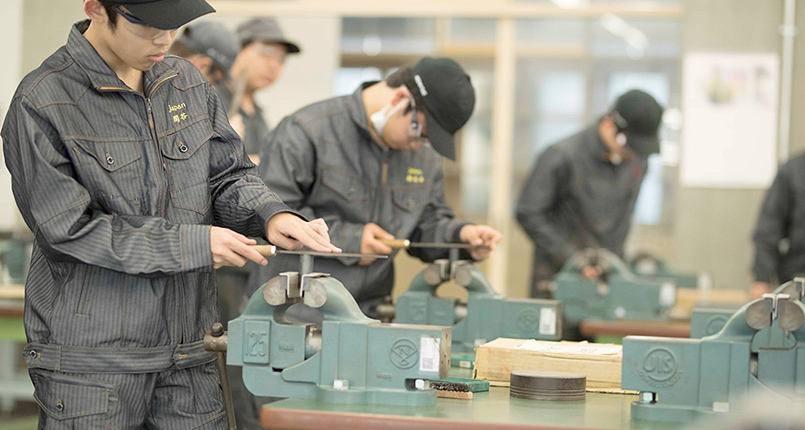
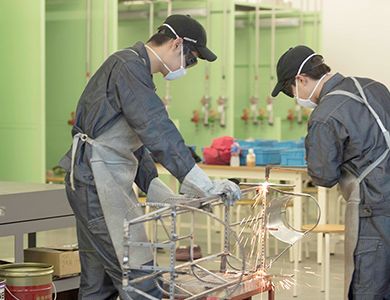

The manufacturing industry in Aichi Prefecture accounts for nearly 40% of the prefecture's total production,
and the value of manufactured goods shipped has been the highest in Japan for 41 consecutive years.*
Aichi has received the Best Team Award at the National Skills Competition for 14 consecutive years* and
has the best manufacturing engineers and technicians both in quality and quantity.
As we enter the era of the fourth industrial revolution, we are in need of versatile human resources who can learn from other fields of study in a comprehensive manner and demonstrate their expertise while looking at the big picture and retaining their own specialty as the core of their field of expertise.
(*As of 2018)
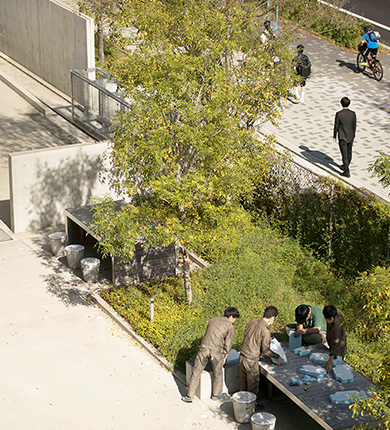
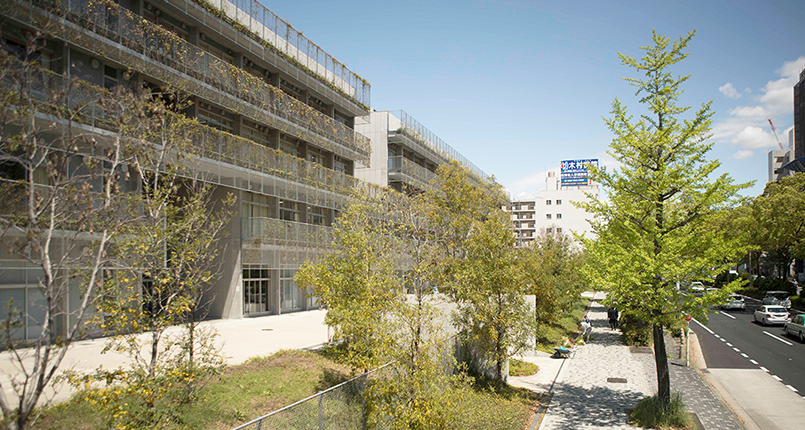
The site is divided into three levels, taking advantage of the topography, which varies in elevation from Higashiyama-dori to Heiwa Park by about 12 meters. Particularly along Higashiyama-dori, the former retaining walls have been removed and were replaced with vegetation, which allows pedestrians on Higashiyama-dori to catch a glimpse of the manufacturing activities at the Communication Plaza on the south side of the building and at Techno Mall, which runs north-south through the building. As a result, this has helped to make the pedestrian environment more attractive.
In the field of manufacturing, the specialization and division of labor are increasing. However, manufacturing requires interdisciplinary collaboration.
All the departments are housed in the same school building that offers many spaces where new encounters and exchanges can take place among the students. These spaces provide a stage for building rich human relationship that transcend departmental boundaries.
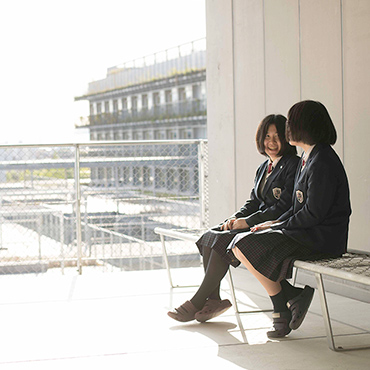
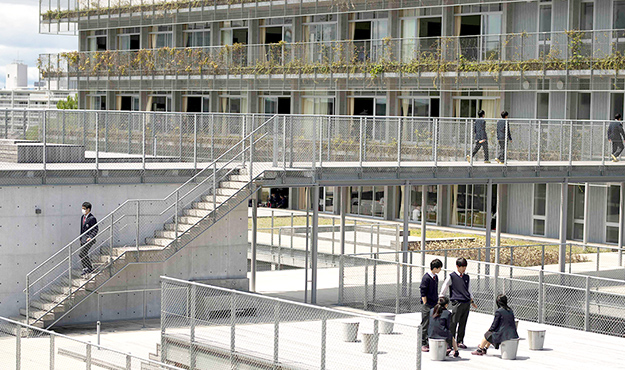
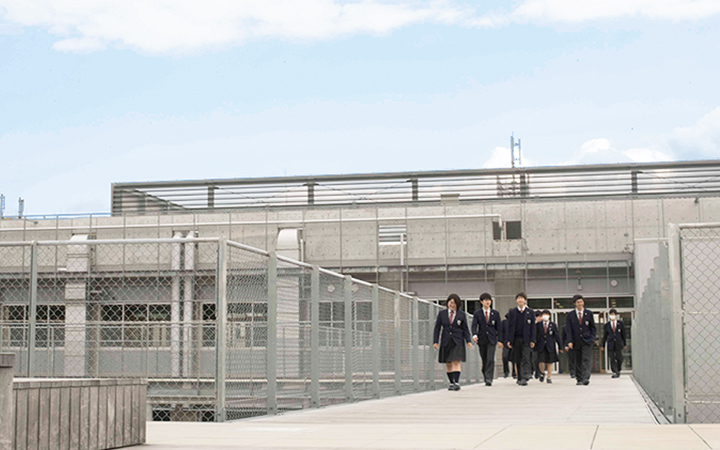
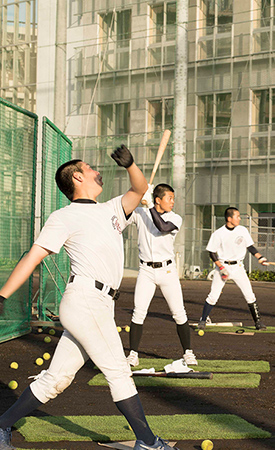
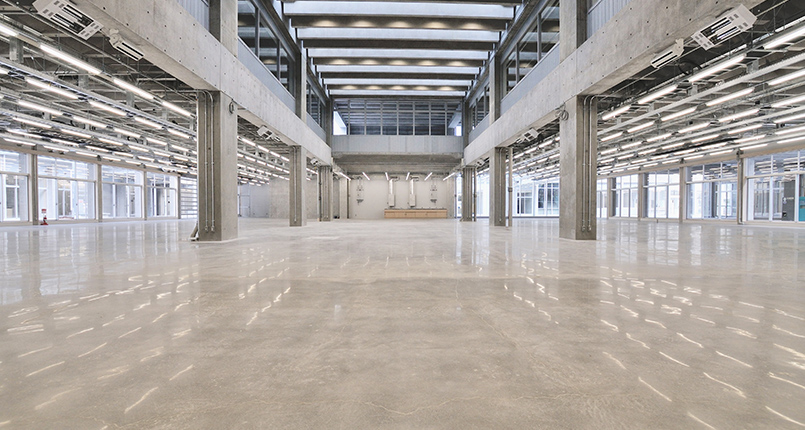
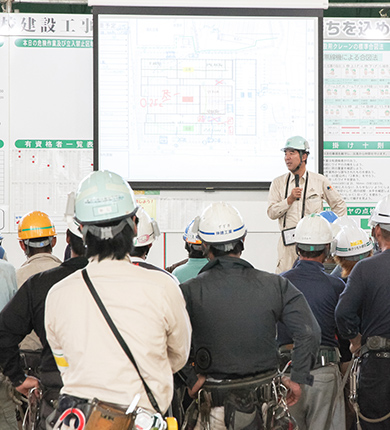
Each of the craftsmen felt this way: “I want to convey my passion for manufacturing to the students who are learning to make things.”
The shiny, polished exposed concrete floor in the large training room seems to reflect their thoughts.
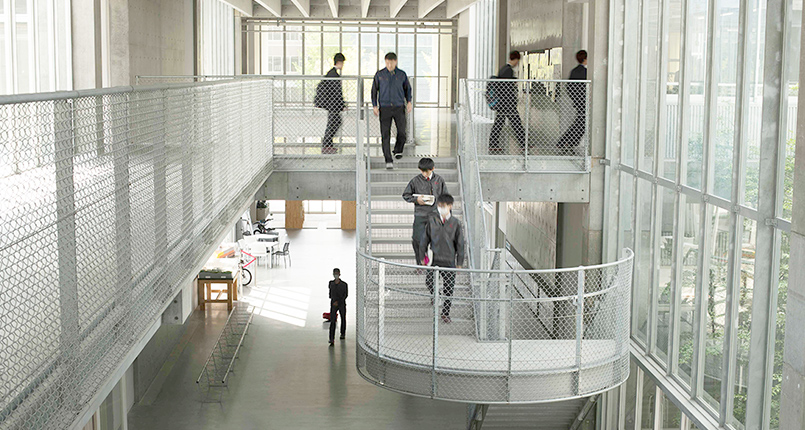
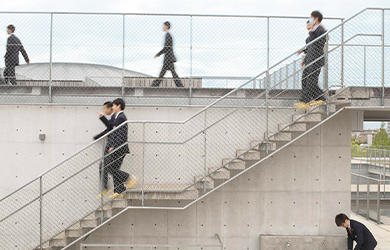
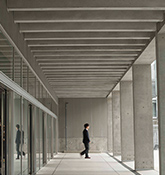
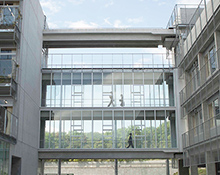
The walls are exposed concrete and the exposed ceilings in the classroom wing and the training wing show pipes and wires that are not usually supposed to be seen.
The automatic doors of the elevators and the entrance are transparent so that the mechanisms inside can be seen.
The building itself serves as a teaching tool that enables students to see and feel its mechanisms on a daily basis.